Let’s Talk Binding, Part Two
To Bind… or how to Bind? That is the Question!
By Phil Mikesell, Senior Account Manager
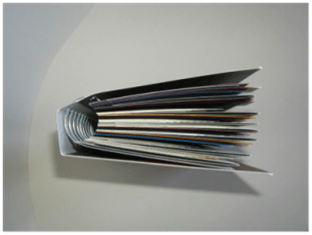 In the first part of “Let’s Talk Binding,” we discussed saddle-stitch, plasticoil, and comb binding. An advanced binding method is hidden coil binding, in which the paper “hides” the coil, giving the booklet a unique look as well as creating a very user-friendly piece.
In the first part of “Let’s Talk Binding,” we discussed saddle-stitch, plasticoil, and comb binding. An advanced binding method is hidden coil binding, in which the paper “hides” the coil, giving the booklet a unique look as well as creating a very user-friendly piece.
Another option is tape binding, where there is actually a strip of tape around the binding edge, extending around the front and back cover approximately ¼”, depending on the width of the tape and the thickness of the book. This is not used very often, but it is somewhat popular for pocket handbooks.
If you are looking to really be different, there are also some specialty methods available like screw-posts, corner rivets, string or ribbon ties and grommets.
Rounding out the bindery options for larger books gives us perfect binding and case binding.
Perfect binding is essentially what most of us know as a paperback book.
The cover is created with a spine that wraps around the inside pages. Those inside pages are ground at the edge by a machine, glue is applied and the cover is added. The grinding allows the glue to soak into the paper fibers and thorough saturation creates better long term hold. Another style that is sometimes used is “lay-flat perfect binding.” This method creates a gap at the spine that will allow the book to lay flat.
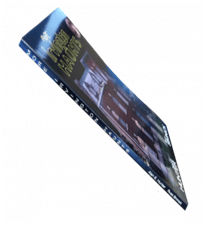
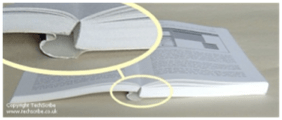
Case binding is what we might know as a hard-cover book. The cover is created separately with a cardboard inner-liner and the pages of the book are glued together with the fly sheet, an inner-liner on the cover that holds the cover and pages together. Often, to increase the durability and longevity of the case-bound book, the pages are then sewn in as well (called Smythe sewing). A dust cover—a sleeve with flaps that goes around the case bound book—may also be printed.
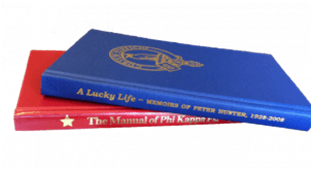
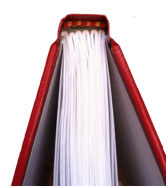
There are many ways to bind your publication, manual, catalog, handbook, etc. to give a finished, professional look. Choose your favorite, or discuss the best binding application for your project with your print professional.
Happy Binding!
